Cedar Vs. Other Woods: Comparing Characteristics and Uses
Woodworking is an art form that’s been around since the dawn of time, and choosing the right wood for your project is essential. Cedar vs other woods – which one should you choose? It all depends on what characteristics and uses matter to you as a woodworker. In this article, we’ll compare cedar with other types of wood so you can make an informed decision about what type or types of cedar wood or wood will best suit your needs.
Cedar is widely used in furniture-making due to its unique grain patterns and attractive colors. Its light weight makes it easy to work with and its natural resistance to rot and decay means it won’t require too much maintenance over the years. On top of that, many species of cedar are highly aromatic, giving any finished piece a pleasant scent. But these aren’t the only advantages that some types of cedar have over other kinds of wood – let’s take a look at some more benefits.
Compared to most hardwoods, cedar tends to be softer, making it easier to shape into complex designs or intricate details. It also takes stain very well if you’re looking for something darker than natural color offers. Additionally, cedar resists warping and splitting better than many other kinds of wood do when exposed to moisture or changes in temperature. All these factors combine to make cedar ideal for outdoor projects like decks, fences, pergolas, and even garden beds where strength and durability are paramount considerations.
Definition Of Cedar
Photo by Nicolas Weldingh on Unsplash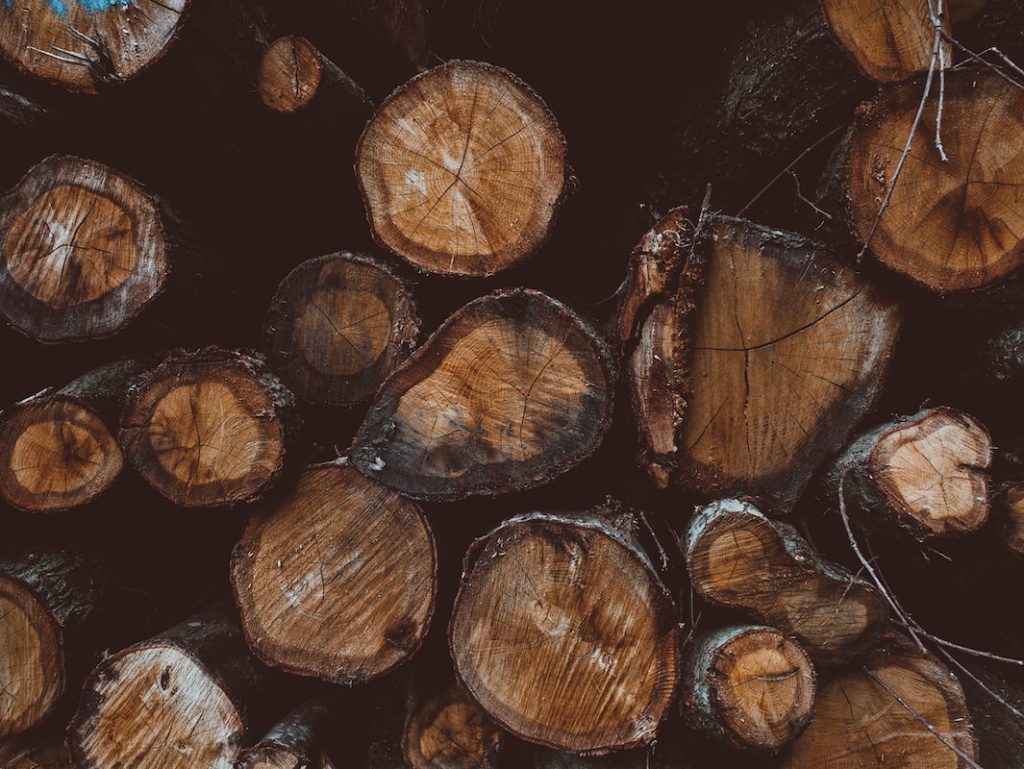
Cedar is a popular wood used in many applications around the home, from furniture to construction. It’s an evergreen coniferous tree that belongs to the Pinaceae family, and it typically grows in humid climates across North America and Europe. The cedar definition can be summarized as a lightweight, durable wood with a distinct aroma.
What sets Cedar apart from other woods is its natural resistance to decay and rot due to its high content of essential oils. This makes it ideal for outdoor projects like decks and patio furniture, where protection against moisture is necessary. Its light weight also helps reduce strain on joints when working with larger pieces of lumber or cabinets.
The smell of cedar has long been associated with relaxation due to its pleasing yet subtle scent; this quality has made it popular for use in closets, chests, and drawers since antiquity as a way of naturally preserving clothing and textiles from pests such as moths. In addition, modern uses include flooring, siding, shingles, countertops, veneer panels, fence posts, and more – all thanks to cedar’s strength yet workability with tools such as saws or chisels.
Finally, due to its unique combination of features – durability, low-maintenance maintenance requirements, and pleasant aroma – there are very few materials better suited than cedar for almost any job requiring superior performance while still looking great over time.
Properties Of Cedar Wood
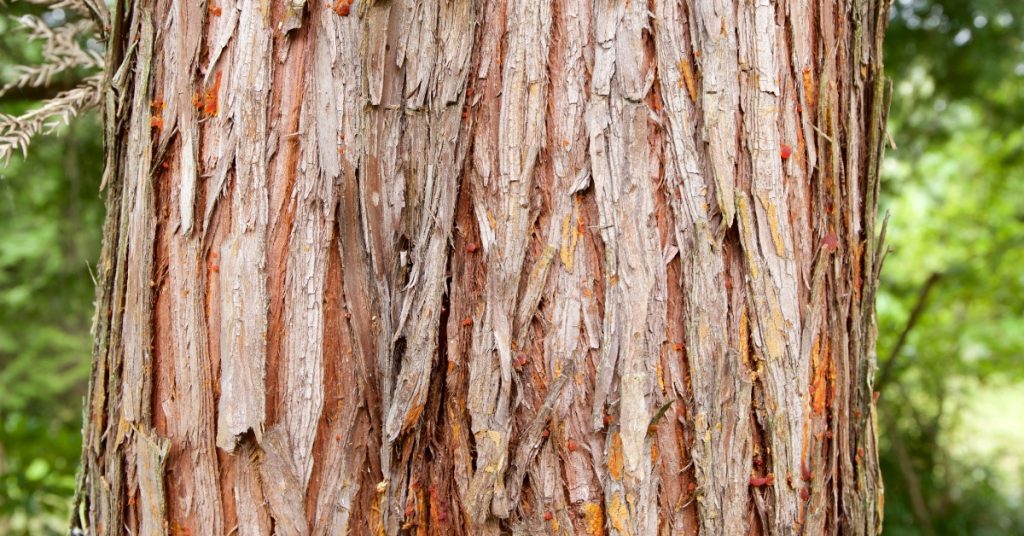
To put it simply, cedar is a jack of all trades when it comes to woodworking. It has many desirable characteristics and benefits that make it the ideal choice for a variety of projects. Let’s take a look at some of its properties and compare them with other popular woods.
Cedar Wood Properties:
- Strength & Durability: Cedar is known as one of the strongest softwoods available, making it highly resistant to splitting and cracking. Its strength also allows it to hold up against heavy wear and tear over time without losing its shape or durability. Compared to other woods such as pine, oak, or maple, cedar can stand up better in harsh climates or extreme weather conditions due to its natural resiliency.
- Color & Grain: The distinctive grain pattern of cedar makes it an attractive option for furniture pieces or decorative accents. Its light-toned color gives off an airy vibe while providing subtle contrast from darker woods like walnut or mahogany. This versatility allows you to mix and match different types of wood together in any project for added visual interest.
- Cost Effectiveness: Cedar is typically more affordable than most hardwood options but does not sacrifice quality in terms of strength and durability. Additionally, because cedar tends to be lighter in weight than other varieties of wood, there are fewer shipping costs associated with buying large quantities online or through lumber dealerships.
The clear advantages associated with using cedar make it an obvious go-to material for those looking to create beautiful yet long-lasting pieces within their budget constraints. From outdoor furniture sets crafted from teak or redwood to intricate cabinetry designs made from cherry or walnut – cedar offers all the same features along with a lower price tag!
Durability And Maintenance
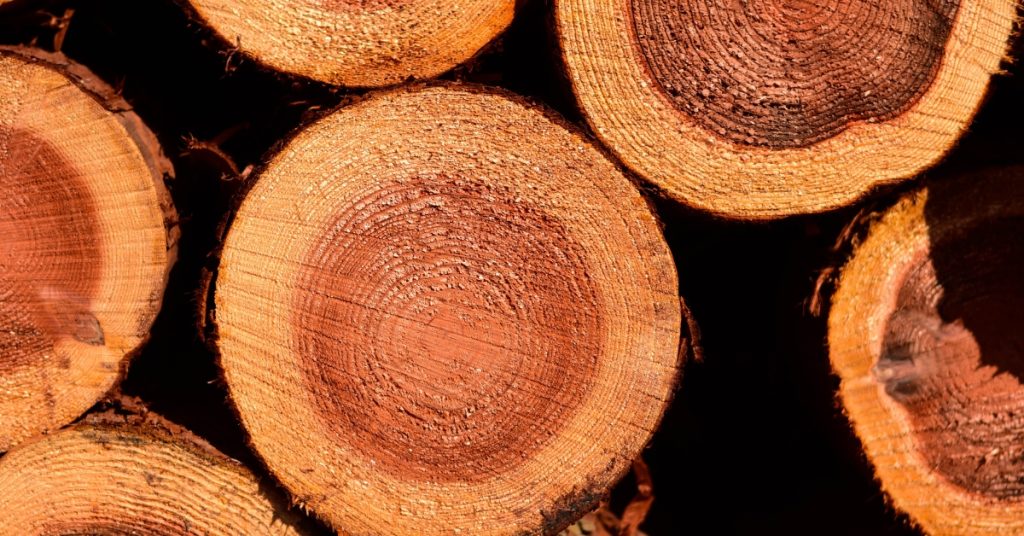
When it comes to durability and maintenance, cedar is an exceptional choice. Cedar is naturally resistant to weathering, termites, and moisture damage. This means that with minimal upkeep, your wood will endure for years. A simple coat of sealant every couple of years can help extend the life of your project even further. Additionally, cedar does not require additional treatments such as staining or painting like other woods do to remain functional outdoors.
In comparison, many other types of wood lack natural protection against the elements. As a result, they require regular sanding and refinishing to keep them from becoming damaged by sun exposure or rainwater. Furthermore, these woods are usually more susceptible to rot due to their inability to resist moisture caused by humidity or water runoff from nearby surfaces. They also have little-to-no resistance to pest infestations such as termites or carpenter ants which can cause significant damage over time if left unchecked.
Cedar’s superior ability to stand up against the elements makes it one of the most durable materials available on the market today for outdoor projects requiring long-term use without frequent maintenance requirements. It offers excellent weatherproofing capabilities along with superb termite and moisture resistance which make it ideal for applications ranging from decks and fences to furniture pieces and exterior siding panels.
By contrast, most other types of wood must be treated regularly when used outside to maintain its structural integrity over time while providing adequate protection against common hazards encountered outdoors such as wind gusts, flooding rains, and extreme temperatures during summer months. Therefore, when selecting lumber for a home improvement project that requires longevity and low-maintenance upkeep, cedar should be heavily considered due to its combination of strength and resilience which outshine all other options currently available.
Cost Comparison to Other Woods
When it comes to comparing Cedar versus other woods, the cost comparison can be a deciding factor. Picture two boxes filled with various wood types: one box is labeled ‘Cedar’, and the other is labeled ‘Other Woods’. Inside each box are samples of building materials at different price ranges. If you look closely, you’ll notice that Cedar tends to be more expensive than many other kinds of wood due to its superior strength and durability; however, this cost difference may also include factors such as availability or labor costs.
On the flip side, when looking strictly at maintenance costs over time, Cedar can come out ahead of other wood types in terms of upkeep needs. Its natural resistance against decay makes it an ideal choice for outdoor projects; since it’s not prone to warping or splitting like some softwoods are, your project won’t need frequent repairs or replacements. In addition, because Cedar doesn’t require painting or staining regularly (as pine does), it can save owners money on construction fees down the line.
What’s more, if you’re looking for a high-end finish that will hold up for years without requiring much attention from you – then there’s no better option than premium quality cedar lumber products. Not only do they have a luxurious look and feel but their natural oils protect against harsh climates. This means that even without regular treatment, your projects will remain beautiful and structurally sound for decades to come!
So while there may be tradeoffs between Cedar vs Other Woods in terms of initial cost investment, it pays off in longevity – making it well worth investing in the higher quality material upfront.
Color And Grain Variations
When comparing the color and grain variations of red cedar to other woods, there are a few distinct differences. Below is a chart that summarizes these characteristics:
Cedar |
Other Woods | ||
| Color | Light tones ranging from yellowish-brown to reddish-brown | Depends on species; can range from light blonde to dark brown or black | |
| Grain | Straight with occasional waves and knots | Varies greatly by species but usually has an interlocked or wavy pattern |
The main difference between cedar’s appearance and other wood types lies in its color variation. Cedar typically has lighter tones that range from yellowish-brown to reddish-brown compared to darker colors like black or brown found in some other woods. Similarly, the grain of a cedar tree tends to be straight with occasional waves and knots whereas other woods may have a more intricate pattern such as an interlocked or wavy grain depending on the species.
Cedar is also known for its resistance to decay which makes it ideal for outdoor projects such as decks, fences, posts, etc. since it will not easily rot even when exposed to moisture. It does require regular maintenance though because it is prone to fading over time if left untreated. On the contrary, many other kinds of wood used outdoors need minimal upkeep as they naturally resist water absorption and insect damage better than cedar.
In summary, while both cedar and various other kinds of wood offer unique advantages in terms of color, grain patterns, and durability, it is important to consider all the factors before making your selection. Ultimately, the choice should be based on what suits your project best at any given moment – whether you’re looking for something traditional or modern; long-lasting or easy maintenance; subtle hues or bold colors – there is no right answer here!
Sustainability Factors
Moving forward, let’s explore the sustainability factors of cedar and other woods. Weaving together environmental concerns with an appreciation for woodworking, and sustainable forestry is a must to consider when selecting your next project material. With that in mind, it’s important to understand how different types of lumber affect our planet– from harvesting to recycling.
As a naturally rot-resistant softwood, cedar is known for its durability and longevity which makes it popular among woodworkers. It can be used both inside and outside buildings without additional treatment or finishes due to its natural insect-repellent properties. Its ability to last long not only adds value but also lessens the need for frequent replacement thus making it an eco-friendly choice of lumber. Additionally, as part of responsible forestry practice, fallen cedar trees are recycled into new products such as outdoor furniture or home decor items – reducing waste while adding character!
On the other hand, hardwoods like oak or cherry provide a strong baseboard with beautiful grain patterns which make them ideal choices for interior projects like flooring and cabinets. While they may require extra upkeep compared to cedar (for example: sealing against moisture), hardwoods offer more vibrant colors and textures than their softer counterparts do. Moreover, many non-toxic finishes exist today that will protect these pieces from wear and tear while preserving their organic quality – this includes biodegradable wood stains too!
Overall, there are plenty of options available when selecting materials for your next project; each one offering unique characteristics suitable for individual needs and lifestyles. From finding renewable sources of lumber to using recyclable resources whenever possible -we have come a long way toward creating environmentally conscious workspaces where creativity meets consciousness!
Types Of Other Woods
When comparing cedar to other woods, several types of wood must be considered. Pine, maple, oak, and walnut are some of the most popular varieties. Each has its unique characteristics and uses.
Pine is a softwood, making it easy to work with for those who don’t have much experience in woodworking. It’s also relatively inexpensive compared to other hardwoods like oak or mahogany. The downside is that pine isn’t particularly durable and can easily dent or scratch.
Maple is another popular option due to its strength and durability. While it may not be as eye-catching as some more exotic woods such as mahogany, maple still provides an attractive finish when finished properly. Maple is often used in furniture making because it takes stain well and won’t warp over time as softer woods do.
Oak is a very common choice for carpentry projects due to its strong properties and distinct grain patterning. Oak stands up better than many other kinds of wood under extreme weather conditions, so it’s great for outdoor applications such as decks, fences, etc. Walnut is another hardwood with similar features but with a darker coloration that can add depth to any project.
Finally, mahogany wood allows carpenters to create something truly stunning if they invest the time into learning how to work with this type of wood correctly. Mahogany has an unmatched natural beauty that few other types of wood can match – plus it’s incredibly strong and durable!
These five different types of woods each provide their unique benefits depending on what your specific needs are:
- Pine Wood: Easy to Work With & Inexpensive
- Maple Wood: Strength & Durability
- Oak Wood: Strong Properties & Distinctive Grain Patterning
- Walnut Wood: Hardwood with Darker Coloration
- Mahogany Wood: Natural Beauty & Incredible Strength
- Cedar Wood: Durability & Resistant to Insects and Rot
Characteristics Of Other Woods
Moving from the varieties of woods, it’s time to examine their characteristics. While each type of wood has unique attributes that can influence a project, all have qualities in common, too. As we consider these features, let us drill down into the details of birch, maple, pine, oak, and walnut.
Birch brings a light tone with its creamy white hue and straight grain pattern – perfect for crafting furniture or cabinetry when you want an airy look. Meanwhile, maple is much denser than birch so it’s great for heavy-duty applications like flooring or tool handles; its uniform texture also makes beautiful butcher blocks and cutting boards. Pine is lightweight yet strong enough for structural uses such as beams or support posts; pines’ knotty nature amplifies rustic charm while still offering plenty of strength. Oak boasts superior hardness and durability which make it ideal for hardwood floors, doors, and stair treads; plus its distinctive grain sets off any traditional style project nicely. Finally walnut stands out with its dark chocolate color – prized by artists who use this versatile hardwood to craft everything from sculptures to jewelry boxes!
What do these five types of wood have in common? In addition to being workable with both hand tools and power equipment (depending on your skill level), they are all relatively affordable compared to many other species. Plus, they offer excellent stability against warping due to changes in humidity levels over time. These factors come together to create a wonderful selection of options no matter what kind of project you’re tackling!
No matter the variety is chosen, there are myriad possibilities once you get started building something special with wood! From cabinets to chairs – tables to toys – every creation becomes one-of-a-kind thanks to the natural beauty found within these materials. So go ahead: choose the right combination of character and utility that fits your needs best…then get busy creating something truly magnificent!
Uses For Cedar Wood
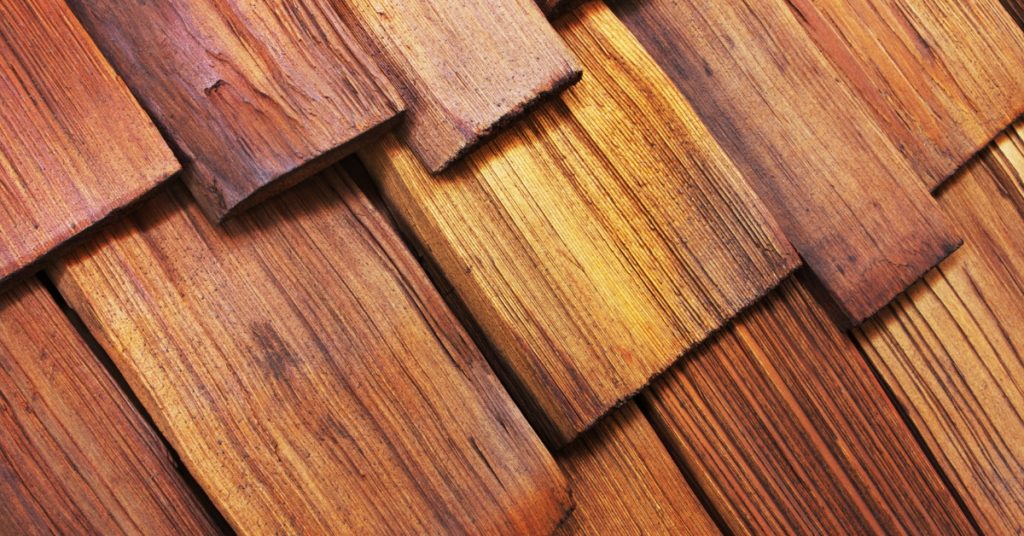
Cedar wood is a popular choice for furniture making, siding, and decks. Its natural resistance to rot makes it an ideal material for outdoor use. Cedar planters are also common, as they look great in gardens while still being resistant to weathering. Finally, cedar shingles make attractive roofs that can last more than half a century with proper maintenance.
When used outdoors, the benefits of cedar wood become even more apparent. This type of wood has a natural oil that helps protect it from moisture damage and insect infestation. It’s lightweight but strong enough to be used for framing or fencing projects. In addition, its natural color and grain patterns add beauty to any landscape design project.
Furniture made out of cedar is both attractive and durable; not only does this type of wood resist warping over time, but it offers superior protection against spills or other liquids due to its high oil content. If you’re looking for something stronger than traditional particleboard furniture, cedar is certainly worth considering when shopping around for new pieces.
Indoors, cedar can bring a unique touch of style to any room without sacrificing strength or durability. Its classic looks pair well with many different kinds of decorating styles such as rustic-chic, modern farmhouse, and coastal cottage designs. Not only will your furnishings last longer thanks to the protective qualities of the wood itself, but they’ll stay looking good too!
From outdoor structures like decks and siding to indoor furnishings like chairs and tables, there are plenty of uses for beautiful cedar wood in your home — all while ensuring lasting quality no matter what the environment may throw at it!
Different Ways To Finish Cedar Wood
Finishing cedar wood is like putting frosting on a cake – it can be the difference between a mediocre result and an impressive one. With several types of finishes available, there are many ways to make cedar wood look its best.
First, let’s consider protection for cedar wood. Two basic finishing techniques provide protection: sealing and staining. Sealing involves applying a clear coat over the surface which prevents water from penetrating the grain of the wood as well as providing UV protection to prevent fading or discoloration due to sunlight exposure. Staining provides coloration in addition to protection; however, care should be taken when choosing stain colors since they may appear different once applied than they did while still in the bottle. Stain also offers some degree of waterproofing and UV protection but this will vary depending on the type of stain used.
Next, we’ll talk about different finishing methods and their respective benefits. One popular finish is brushing with boiled linseed oil which adds luster and helps bring out any natural highlights in the grain pattern of the cedar without adding too much pigment or changing the overall appearance significantly. For those looking for more depth of color, varnish-based products such as polyurethane offer good durability and resistance against moisture damage but do have an amber coloring so should not be used if you want your finished product to remain light in tone. Finally, for an even darker finish, you could use stains specifically designed for cedar wood including semi-transparent tung oil-based stains that penetrate deep into the pores of the wood for maximum coverage and superior water repellency compared to other types of stain treatments like pigmented lacquers or shellac-based sealants.
In short, there are many great options out there when it comes to finishing your cedar project – just remember that whatever method you choose needs to provide adequate waterproofing and UV protection while allowing you to achieve the desired aesthetic outcome!
Popular Uses for Other Woods
When it comes to popular uses for other woods, furniture is one of the most common. Wooden furniture remains a timeless classic that never goes out of style and can be customized in various stains, paints, and finishes. The type of wood chosen will depend on the desired look; certain types may require more maintenance or treatments than others. Hardwoods are ideal for indoor use as they provide strength and durability while softwoods may be better suited for outdoor projects such as decks, window frames, sheds, etc.
In terms of wooden flooring, hardwoods like maple, oak, ash, and walnut are some of the most popular choices due to their longevity and aesthetic appeal. These materials also make excellent counters and tabletops when properly treated with sealant or varnish. Softwoods like pine and spruce offer a more rustic feel but tend to warp over time if not maintained well so they’re best used in less exposed areas.
When creating an outdoor space there are many options available beyond cedar decking. Composite materials have become increasingly popular because they’re easy to install and don’t require much upkeep whereas real wood needs periodic staining/sealing depending on usage. Pressure-treated lumber is another option that offers resistance against rot without splintering; however, it’s important to keep in mind that this material contains chemicals that could affect its integrity over time.
Wooden window frames are typically made from either hardwood or softwood according to personal preference although aluminum framing provides added insulation benefits during cold weather months. For smaller structures like storage sheds or playhouses, plywood is often preferred due to its lightweight yet sturdy nature making it easier to construct without compromising structural integrity. All these materials must be handled properly otherwise they can deteriorate prematurely requiring costly repairs down the line.
Benefits And Drawbacks For Each Type Of Wood
Cedar is widely recognized for its numerous benefits. It has a natural resistance to rot and decay, making it an ideal choice for outdoor projects such as furniture, decks, fences, and roofing material. Cedar also ages well over time; its color deepens into a golden-brown hue if left untreated. Moreover, cedar is relatively lightweight compared to other woods like oak or mahogany, which makes it easy to work with. Lastly, cedar is generally less expensive than other hardwoods available on the market.
On the downside, cedar does not have the same level of sustainability as some other types of wood like pine or spruce. Additionally, cedar can be prone to cracking and splitting when exposed to unpredictable weather conditions due to its softness. In comparison with harder denser woods like maple or walnut offer more durability in terms of wear resistance and impact performance.
In terms of cost-effectiveness, pine tends to be one of the cheaper options among lumber species but may require additional care over time because it’s not as resistant to pests or extreme temperatures as cedar is. Oak is another popular hardwood option that offers great strength and durability but often comes at a higher price point due to its scarcity relative to softer woods like pine and spruce. Mahogany is known for being extremely durable yet costly since it takes longer for trees used in this type of woodworking project to grow back fully mature again after harvesting them from nature reserves around the world.
Ultimately there are pros and cons associated with each type of wood depending on what you need out of your specific project whether it’s affordability or long-lasting quality—it all depends on personal preference in terms of which materials suits best for those particular needs.
Environmental Impact Considerations
When assessing the environmental impact of different woods, sustainability rating is a key factor. Cedarwood has an admirable sustainability record that outshines other types of wood used in construction and carpentry. This makes it ideal for eco-friendly projects requiring green building materials with forest conservation as a priority.
| Wood Types | Sustainability Rating | Environmental Certification |
| Cedar | High | LEED/FSC Certified |
| Oak | Medium | None |
| Pine | Low | None |
Cedar boasts a high level of durability, making it a reliable choice for outdoor structures or furniture that will be exposed to weather elements. It also contains natural oils which give it insect resistance qualities – another plus when considering its usage outdoors. Additionally, cedarwood can be recycled easily since it doesn’t contain any toxins or volatile organic compounds (VOCs).
On the other hand, oak and pine are less likely than cedar to qualify for LEED certification due to their lower sustainability ratings; however, both have excellent strength properties and may perform better than cedar under certain conditions such as higher humidity levels. In terms of environmental friendliness, neither material holds up against cedar’s impressive bio-degradation ability – allowing this type of wood to break down naturally over time without contaminating its surroundings.
Cedar is the superior option when searching for eco-friendly materials that meet green building requirements while still offering great performance characteristics compared to other woods available on the market today.
Design Aesthetic Options
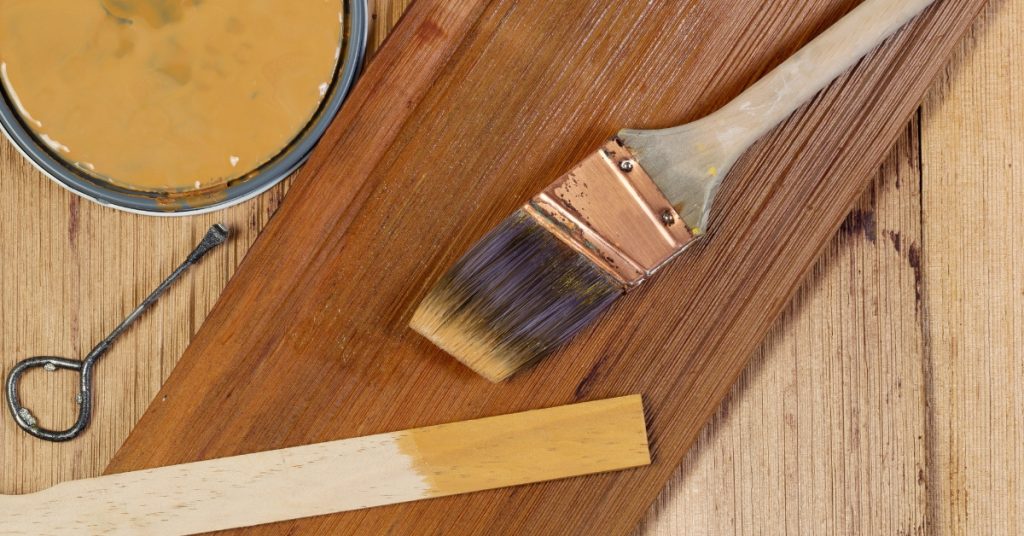
When it comes to design aesthetics, cedar offers a variety of options. It has been used in minimalistic and contemporary designs due to its natural texture and rustic charm. With its modern look, many homeowners opt for white cedar, when they want an updated style with a touch of warmth.
Cedar’s versatility makes it popular among woodworkers who need different types of wood for their projects. Its unique grain patterns make it ideal for furniture pieces, cabinetry, mantels, entryways, or any other feature that needs a refined finish. Cedar is also relatively easy to work with compared to other hardwoods such as oak and walnut. Not only can you shape the wood easily into whatever desired form but you can sand down rough edges quickly without much effort.
The light color of cedar adds brightness to any room while the subtle grain pattern gives visual interest without being overpowering. This makes it especially suitable for rooms with neutral colors like beige or grey since the wood will not clash visually with the walls or furnishings. Additionally, cedar is resistant to moisture which means pieces made from this wood last longer than those made from softer woods like pine.
Whether you are looking for something classic yet elegant or sleek and modern, the red cedar wood provides an abundance of possibilities for your project’s aesthetic appeal. So if you’re searching for a beautiful material that can bring both refinement and character into your home, consider utilizing cedarwood!
Alternatives To Traditional Wood Products
Having discussed the various design aesthetic options available with traditional wood products, it is important to also recognize that there are numerous alternatives on the market today. While wood remains a popular choice for many DIYers and professionals alike, other materials offer unique characteristics that may suit certain projects better than classic woods like cedar. Let’s explore some of these other options:
- Bamboo
Bamboo has become an increasingly popular material in recent years due to its sustainability and versatility. It can be used in place of lumber in furniture-making and cabinetry, as well as flooring installations. Its light weight makes it easy to work with compared to heavier hardwoods like oak or walnut. Additionally, bamboo boasts excellent durability when properly maintained—it is not prone to rot or decay from water damage like some varieties of softwood.
- Plastic
Plastic provides a great alternative for those interested in creating outdoor items such as lawn furniture or planters without having to worry about whether exposure damages their project over time. In addition, plastic can be made into almost any shape imaginable; this makes it perfect for use in intricate designs where exact shapes need to be replicated consistently throughout the piece. Finally, plastic requires very little maintenance—in most cases, it will last indefinitely if kept clean and free of dirt accumulation and UV rays.
- Vinyl
Vinyl is often chosen by homeowners looking for inexpensive siding solutions but it can also be used creatively in smaller projects around the house too! For instance, vinyl can make strong yet lightweight panels that are perfect for more compact builds such as window boxes or trellises—items that must bear both weight load and adverse weather conditions while remaining aesthetically pleasing year-round.
- Fiberglass & Ceramic
Both fiberglass and ceramic provide creative opportunities for builders but they differ slightly in terms of practicality versus aesthetics respectively; fiberglass is ideal for applications requiring strength (e.g., vehicle body parts) whereas ceramics excel at providing visually stunning decorative accents (e.g., tile mosaics). However, regardless of the intended purpose either material offers superior longevity – something all craftspeople should strive towards achieving no matter what type of materials they choose.
Overall, there are plenty of nontraditional elements that have been rapidly gaining traction within the world of carpentry and home improvement – so don’t limit yourself when selecting materials for your next undertaking! Experimentation might just lead you down new paths filled with unexpected delights… …that can make your project truly unique and one-of-a-kind!
Conclusion
In conclusion, cedar is a great wood choice for many projects due to its durability, relative affordability, and attractive color variations. However, it’s important to consider the environmental impact of using any type of wood before making your decision. Other types of woods can provide cost savings and unique aesthetics that you won’t find with cedar. It’s also worth exploring some non-traditional wood products as viable alternatives.
One interesting statistic to keep in mind when choosing between different types of wood is that cedar has twice the strength-to-weight ratio than other common lumber species, such as pine or fir. This means it requires less material for a given project which can help reduce costs and waste in addition to contributing environmental benefits.
When selecting materials for your next building project, remember to take into account all aspects from a design aesthetic and performance needs to environmental impact considerations and budget constraints. With so many options available today there will be sure to be an ideal solution no matter what your requirements may be.
